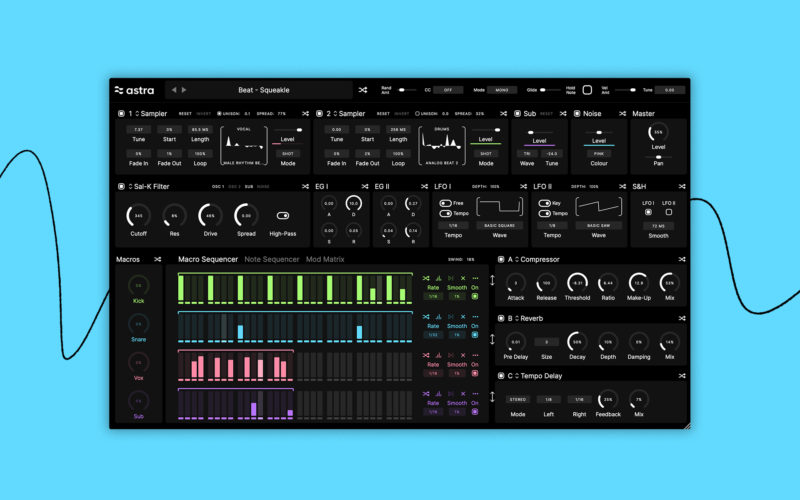A long time in the making, Astra is a versatile software synth capable of achieving a wide range of unique tones.
When we set out to create this instrument back in 2018, we wanted to provide the widest possible range of functionality—pushing the technical envelope as far as we could go—without making it feel overwhelming or all-over-the-place. For me, the sweet spot with an instrument comes when the creative process is simplified, not overcomplicated with too many options or menus.
Ultimately, the speed at which the end user can come up with high-quality sounds is the single most important factor with Astra; cumbersome preset load times and slow interface graphics are nowhere to be found. Almost all of Astra’s features can be viewed simultaneously in its open-ended interface, without the need to click into complex menus or multiple tabs. The interface can freely be resized by dragging the bottom right corner.
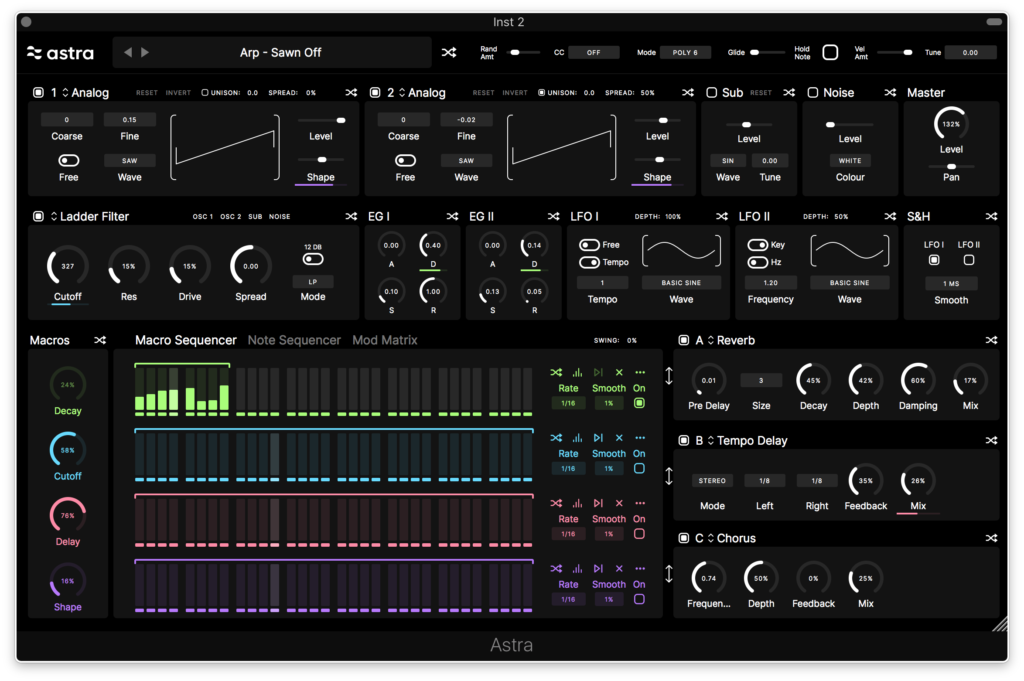
Astra has two main, identical oscillators. Each one is configurable to be used for virtual analog, FM, granular, sampler, or wavetable-based synthesis. There’s also a sub oscillator, noise generator, multi-mode filter, two envelope generators, two LFOs, a sample & hold section, and a comprehensive effects engine. Below, let’s dive into these features and more in a little more detail.
Explore Astra alongside a collection of other plugins and features via the Splice Creator plan.
The oscillators in Astra
Analog: The virtual analog oscillator has saw, square, triangle, and sine wave generators with level, shape, coarse, and fine tuning controls. This oscillator type can be synchronized with the sub oscillator to create old-school lead or bass sounds.
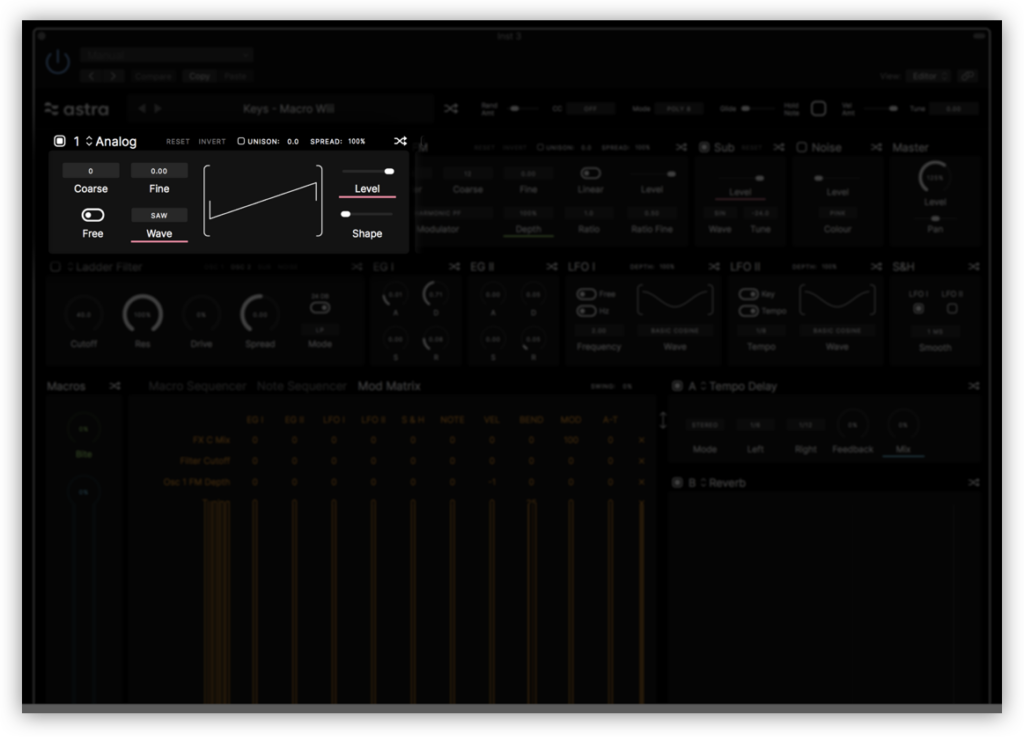
FM: The FM oscillator has four carrier waveforms, with a user-loadable main modulator waveform and switchable linear / exponential FM for a wide scope of sound design.

Granular: The granular oscillator allows small sections of an audio file to be looped to form their own unique oscillator. We offer a comprehensive selection of factory samples, as well as the ability for a user to add their own sounds.

Sampler: This oscillator features a basic sampler, which allows any sound up to 60 seconds in length to be mapped across the keys, looped, or reversed. The pitch can be fixed to its native note (which is useful when creating layered drum hits or beats) by using the RESET option.
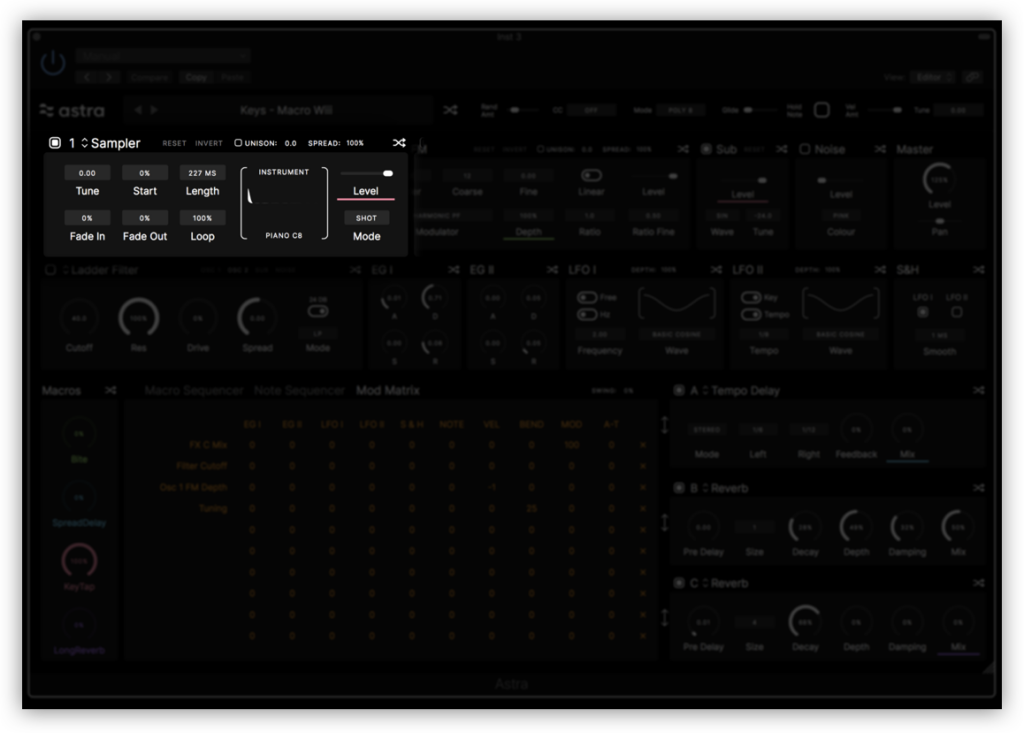
Wavetable: The wavetable oscillator generates single-cycle waveshapes, either using our factory library (mostly sampled from my own hardware synths) or custom waveforms added by the user.
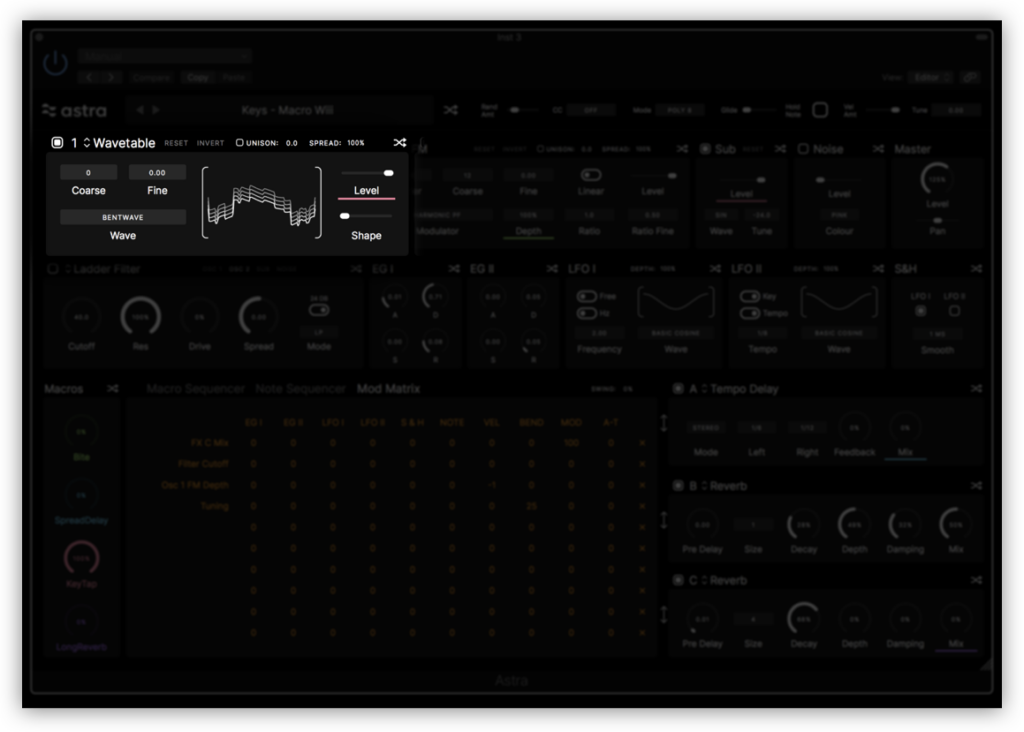
Below are some other features that you may want to consider exploring and using alongside the oscillators:
- The sub oscillator located to the right of the main oscillators has five waveforms (saw, square I, square II, triangle, and sine) and can be tuned across a four-octave range.
- There are various different filters available, and each one has unique sonic characteristics and order configuration options.
- Each of Astra’s twin LFOs can run at up to 27 different rates, either synced to the DAW’s tempo or set to operate independently. There are a variety of different waveforms, and again you can load your own single-cycle shapes. The LFOs’ depth values can be assigned to a macro, and then a device such as a mod wheel controller.
Macros in Astra
Almost any parameter in Astra can be assigned to one of four macros by clicking and dragging its name directly onto one of the macro knobs. The parameter will then be underlined in the native color of the macro it’s assigned to. Numerous controls can be assigned to any one macro, and its name can be customized by double clicking it.
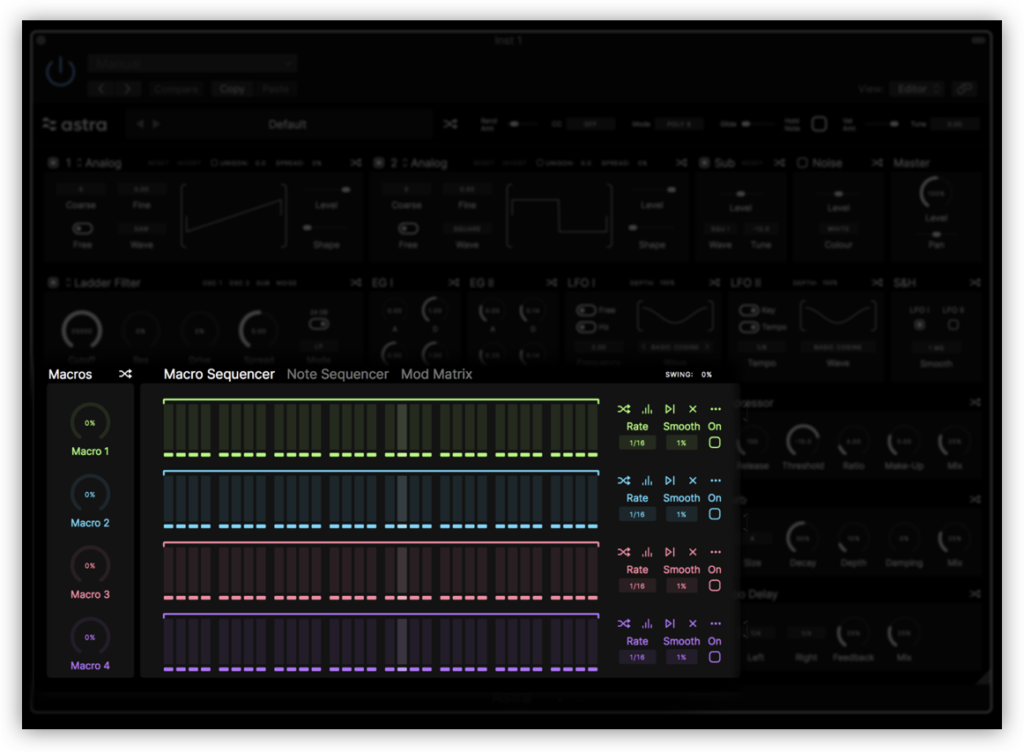
When a parameter is assigned to a macro, the assignable range can be modified by clicking the line under it and dragging left or right. This is extremely useful when there are multiple parameters on any one macro.
The Macro Sequencer
One of the most prominent features of Astra is its Macro Sequencer. Each macro can be automated within its own 32-step sequencer lane with a variety of modifiers—each lane can run at its own unique rate, range, and number of steps. The step range can be modified by clicking and dragging the locators above each lane.
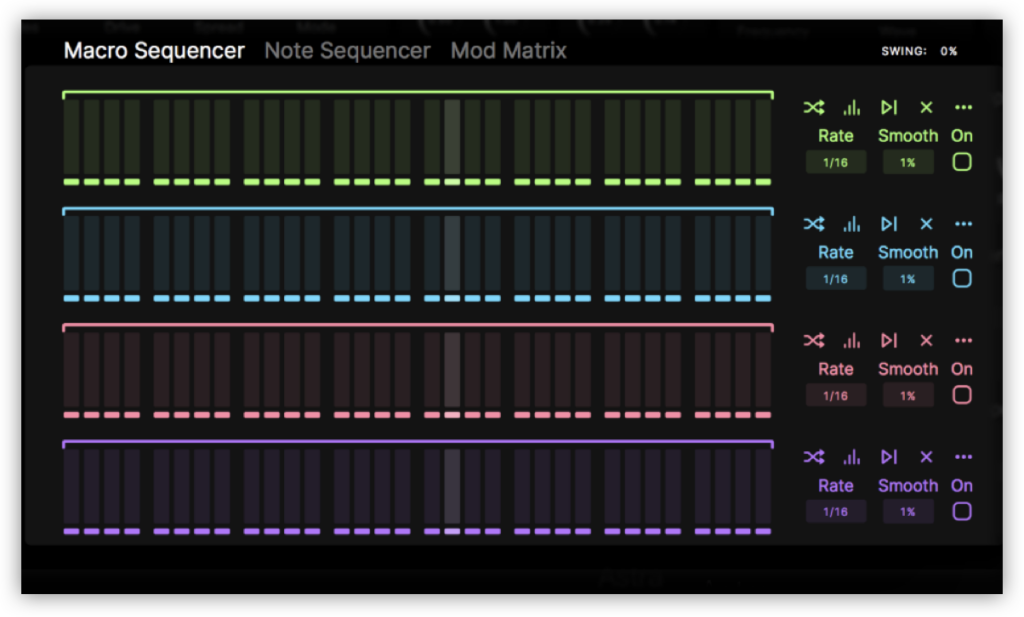
Lane sequences can be randomized and patterns can be loaded or saved by clicking the respective icons on the top right of each lane. There are also smoothing controls to ease the transition between parameter values, in addition to a global swing control. Clicking the horizontal dots on the top right of each lane allows you to access a menu to flip and incrementally increase or decrease lane data.
The Note Sequencer
Astra’s Note Sequencer operates in the same manner as the Macro Sequencer. There are individual lanes for pitch (P), velocity (V), and gate (G). Step mutes are linked, and note data can be limited to popular scale types by using the SCALE menu. Right clicking in a lane generates a line tool and allows fades and uniform patterns to be written. Swing values for all of the sequencers are also linked.
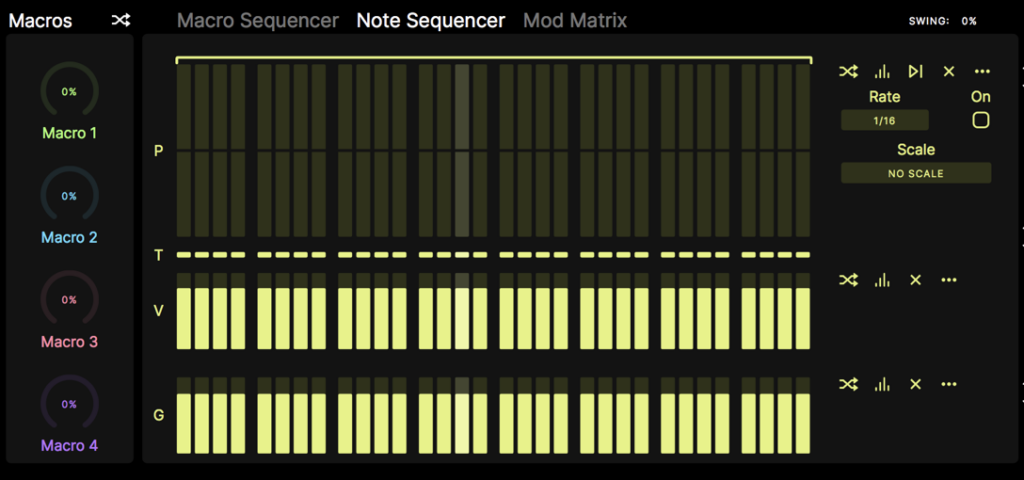
The Modulation Matrix
Lastly, let’s cover the Modulation Matrix, which can be accessed via the Mod Matrix tab seen below. Parameters can be dragged into any of ten slots. The envelope generators, LFOs, sample & hold, note (key follow), velocity, pitch bend, modulation wheel, and aftertouch values can be entered by double clicking them, and cleared by clicking the ‘x’ at the end of each lane. EG1 is configured to act as a master VCA, but can serve a dual purpose within the mod matrix.
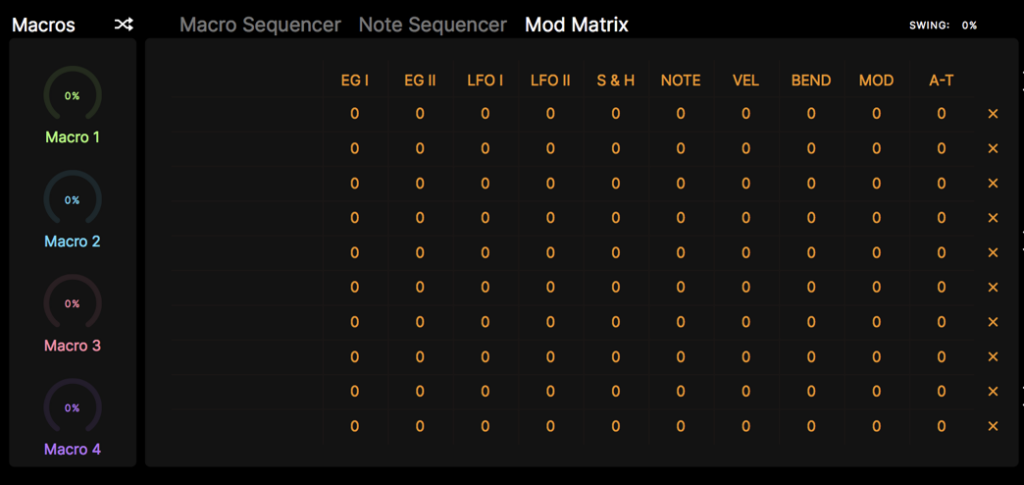
Hopefully this article gave you a bit of an overview into the different key capabilities that Astra offers. That said, no amount of words can replace firsthand experience—we encourage you to play with the synth yourself, exploring the features and parameters we mentioned above as starting points. We also have some dedicated video lessons for Astra on Splice Skills if you’d like to dive even deeper with us.
Explore Astra alongside a collection of other plugins and features via the Splice Creator plan:
June 7, 2021
